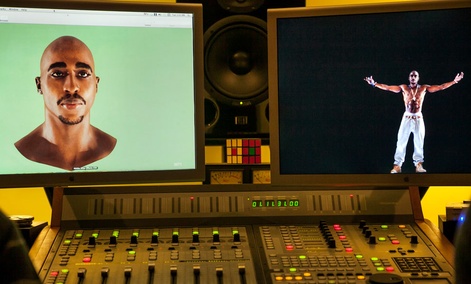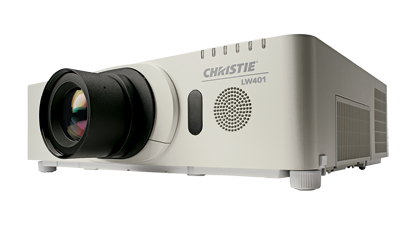
Ready for Hologram: Could Virtual Campaigners Shake Up Elections?
Will voters turn out to watch a hologram deliver a stump speech?
Well, of course—who would turn down the chance to see something out of Star Trek? But once the initial novelty wears off, perhaps especially after the novelty wears off, some think the technology could become an essential part of future presidential campaigns.
Imagine a candidate stumping in Colorado, with his virtual doppelganger beamed live to Florida, Iowa, and Ohio. Campaign rallies will no longer be limited to a candidate’s travel schedule.
That’s the vision of Jeff Taylor, who has gone from campaign specialist to hologram advocate.
“If a candidate has to be in Portsmouth, New Hampshire, and there’s also a very important event in Clairmont, you send a surrogate [today],” he said. (Taylor helped George H.W. Bush capture the Granite State in the 1988 primary.)
He doesn’t think that will be the case for long. Taylor is the point man in Washington for Hologram USA, a company that holds the North American license to a popular hologram technology. The worldwide patent-holder, Musion, helped Indian Prime Minister Narendra Modi win that country’s election in May, holding more than 1,000 hologram rallies.
Of course, a hologram can’t press the flesh or kiss a baby. But what it lacks in retail campaign skills, it can nearly equal with its manyfold multiplication of candidates’ appearances. And watching a hologram won’t just be like like seeing a remote candidate on a screen, says Alki David, Hologram USA’s CEO. The technology will “create an image that is projected in such a way that is absolutely indistinguishable from a real person or object,” he said.
But bringing candidates “on stage” around the country won’t be holograms’ only use. Taylor envisions a GOP convention in which a hologram Ronald Reagan delivers his iconic “tear down this wall speech” or a Democratic rally that features John F. Kennedy’s inaugural address brought to life in virtual form.
Or a party’s nominee could beam into the first day of the convention to excite the crowd before his or her in-person acceptance speech later in the week.
It’s all but certain that the technology can do all this. But will voters see it as a sideshow or another way to hear from presidential wannabes?
In India, Modi’s hologram campaign stops were able to reach rural voters who would likely have never otherwise gotten a “visit” from a candidate. But even in the better-connected United States, David thinks holograms can connect with citizens. “The American mind is a very vivid-thinking culture,” he said. “More reserved cultures may or may not react as colorfully … [but] the U.S. embraces this type of technology.”
Original article is taken from www.nextgov.com



